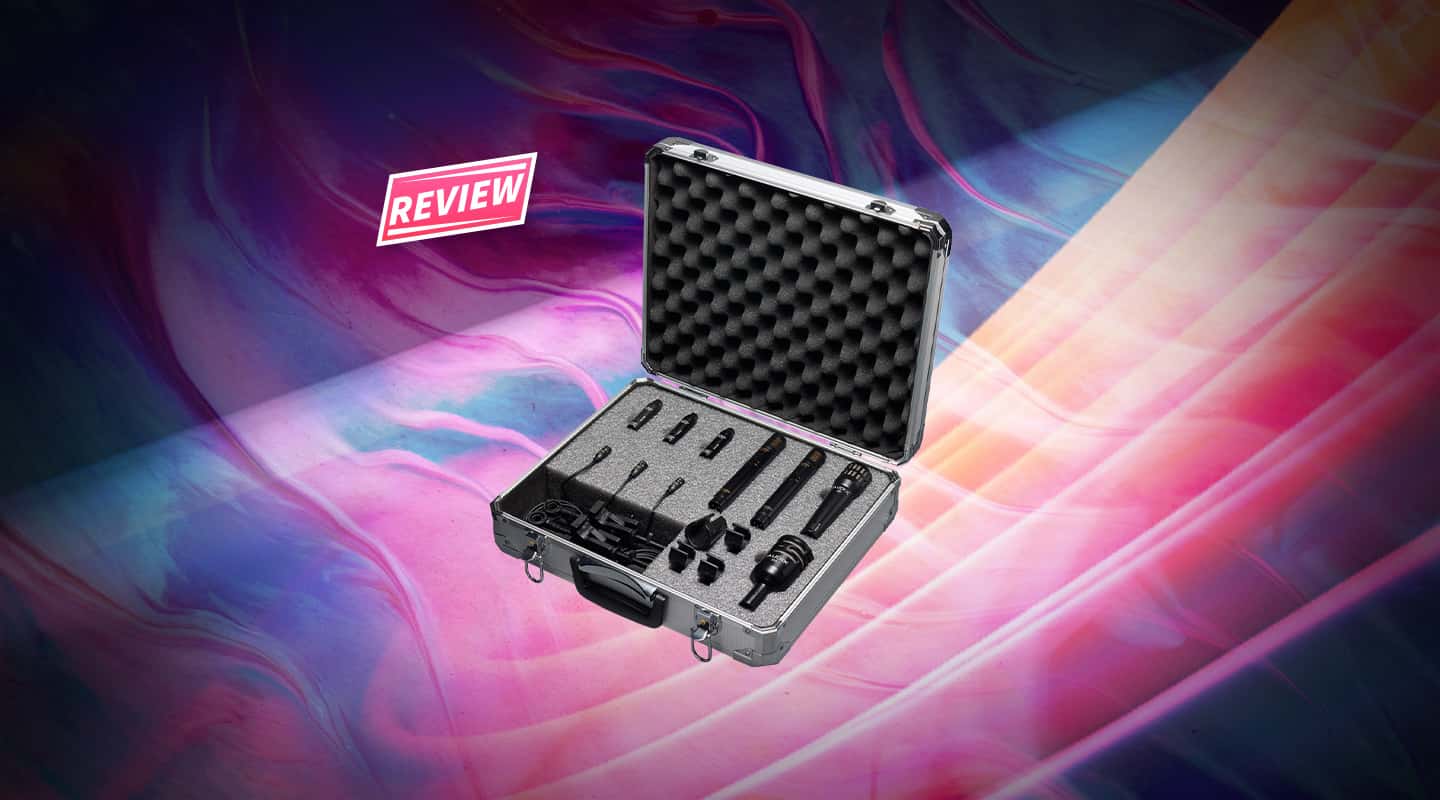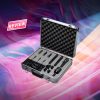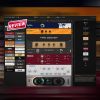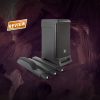
Review: Audix DP7 Micro Drum Pack
You know about the D6 kick mic but you may not know about The Micros Range. Mark Woods wonders whether he can afford not to buy this seven-piece mic pack.
Photos: Leonie Van Eyk
Audix has been making microphones for the pro audio market since the 1980s, with products designed for live, studio and broadcast applications. Best known for its range of dynamic instrument mics, I’d describe its style as ‘innovative but practical’. Led by the evergreen D6 kick drum mic and D2/D4 tom mics, its range includes the popular OM Series of vocal mics, some interesting studio mics, instrument mics, and headphones.
Audix offers a range of themed mic kits for common applications including drums, project studios and pianos. The DP7 Micro drum package contains seven mics designed for a standard five-piece drum kit in either a studio or live setting. The DP7 Micro package is a variation on its standard popular DP7 drum mic kit and replaces the DP7’s dynamic tom mics with three MicroD miniature condenser mics from the new The Micros range.

NEED TO KNOW
THE KICKER
The Audix D6 kick mic has got to be the most common kick mic I see on stages and a standard for the heavier rock styles with its aggressive low frequencies, scooped mids and added high frequencies. A modern, transformerless design, its low sensitivity (0.8mV/Pa) suits the application – it will take high levels and features a tight polar pattern to reduce ambient sound. A machined aluminium body makes it light and it’s relatively small so it will easily fit through the hole in the front skin for placement anywhere inside the kick drum.
The D6 looks like a kick mic but it’s soft, boomy and its mid-shy to talk into. Tapping the front of the mic gives you a fat boof sound. Put it inside or in front of a kick drum and it comes to life with full and punchy low frequencies that are powerful rather than big or particularly extended. The scooped mids give it a fat sound, while the exaggerated response above 2kHz pushes the beater crack to the front of the mix. The sound of rock.

i i CAPTAIN
Next up is an Audix i5, nominated for snare duties in the DP7 Micro kit. It’s a reasonably-priced general purpose dynamic instrument microphone featuring a frequency response well-suited to snare with a fattening boost in the lower-mids, flattish midrange and prominent boost from 3kHz to 10kHz. The i5 is manufactured with a caste zinc alloy body and grille, and tips the scale at a lightish 248g.
The Audix i5 snare mic features a more standard sensitivity (1.6mV/Pa) and its much closer to a general-purpose mic than the specialist D6. The proximity effect is pronounced and it strongly rejects sound arriving from the sides and rear. As a snare mic its fat and round with a strong boost around 5kHz to help the snap cut through. It’s also suitable for percussion, horns or guitar cabs. Handling noise is a little high but it could prove to be a capable live vocal mic – it has a kind of radio sound with strong low-mids. The i5 is mounted on a stand by the MC1 nylon moulded clip that grips well but marks easily.
Both the D6 and the i5 feature versions of Audix’s VLM (Very Low Mass) capsule design that uses diaphragms made from their own proprietary material that is lighter than the commonly-used Mylar, so can it react faster for more accurate transients.

OVERHEADS
Overheads are captured by two Audix ADX51 condensers. These are a conventional electret design with a 14mm gold vapour (GV) diaphragm inside a brass body with recessed switches for the 10dB input pad and the 150Hz bass rolloff. The frequency response is tilted to emphasise the higher frequencies, giving it a slightly bright character well-suited to overheads or percussion. The ADX51s and the D6 use the smaller Audix DCLIP stand mount. It’s a simple but efficient design made from hard nylon. The mic snaps in and out from the top of the mount, a metal thumbscrew locks it in position.

MICRO MODELS
Tom mics on live stages are traditionally a tight-pattern dynamic with strong/emphasised low frequencies and high level handling. It seems contradictory to use small diaphragm condensers but here we are, they’re being pushed by several manufacturers and do offer some advantages over dynamics, depending on the application. Assuming they’re padded or can take the level, the small diaphragm condensers are fast and generally accurate with an honest off-axis response. The harder the rock, the more you need the explosive LF push and maximum isolation that dynamics deliver but lighter styles can benefit from the more open and natural sound of condensers. Jazz kits are a good example where dynamic mics on toms are too closed and lumpy, while condensers deliver a more open kit sound.
The three MicroD tom mics included in the DP7 Micro package are miniature condenser clip-on drum/percussion mics with a hyper-cardioid pattern and greater then 140dB SPL level handling. Not quite as tight a pattern as the D2/D4 dynamics and without their prominent low-end boost, the MicroD’s deliver a more natural and detailed sound that won nods of approval from engineers visiting the Theatre Royal Castlemaine where I manage the sound. Only 34mm wide, they slip into the circular aluminium shockmount on top of the DViceMicro drum mounts and sit snugly insulated from the physical jolts they’d otherwise receive being attached to the drum rim.
MicroD’s deliver a more natural and detailed sound that won nods of approval from engineers

MOUNTING A CHALLENGE
The DViceMicro hoop-mounted drum mounts are great. It’s a challenge to design a mount with an adjustable gooseneck that will fit universally and is easy to attach and detach. Rubber mounts that stretch over the rim are the most common but seem crude compared to the Audix approach that uses a spring-loaded lower clasp and a fixed top clasp. You get the technique of placing the lower clasp under the rim and stretching the mount up until the top clasp slips over the top rim of the hoop after a couple of goes. Only once did I meet a drum kit that had top skins that blocked the space under the rim but it still had enough grip in the spring to hold tight. Once mounted, it’s easy to adjust the gooseneck to the preferred position.
Some drummers don’t like microphones mounted directly onto their drums at all, and I understand that if it’s a 300g dynamic mic plus mount hanging off the rims – I use stands to avoid the issue unless I’ve checked with the drummer. But the 47g MicroD toms mics offer a good compromise. They shouldn’t affect the drum balance or tone and they’re more convenient than mics on stands, specially in small touring situations where space and weight are important.
MICRO MANAGING
I took the MicroD kit on a small-ish tour where the acts ranged from mid-level pop bands to a loud rock band (Queenie), and the MicroD kit proved versatile and fuss-free. Touring is tiring and could be why after a couple of shows I started using a MicroD on snare as well as the rack and floor toms. The MicroDs sound similar to the brightish ADX51 overhead mics and don’t have the boosted lows of the i5 but they’re still punchy when placed close to the snare skin and have a pleasingly detailed presence.
The Audix DP7 Micro kit is ideal for pop/rock drums but versatile enough to be suitable for softer styles where detail is more important than punch or there is an emphasis on percussion instruments. Audix mics are reasonably priced anyway and purchasing them in a kit offers great value for a set of co-ordinated application-specific microphones. I think sound mixers generally buy mics one-at-a-time but kits make sense for production companies, venues and educational settings looking for a one-purchase solution.























RESPONSES